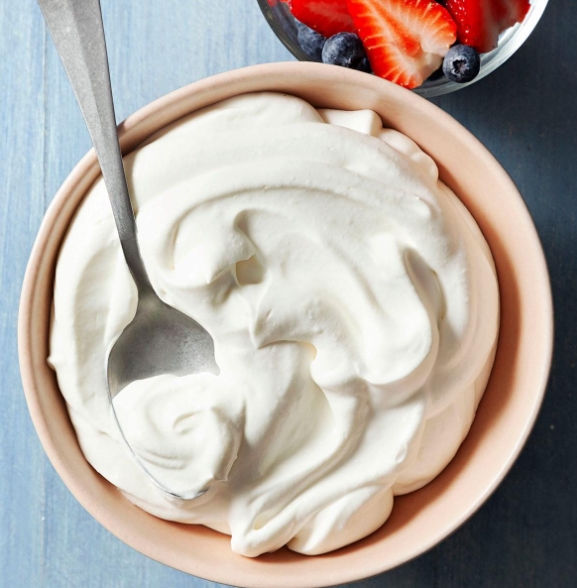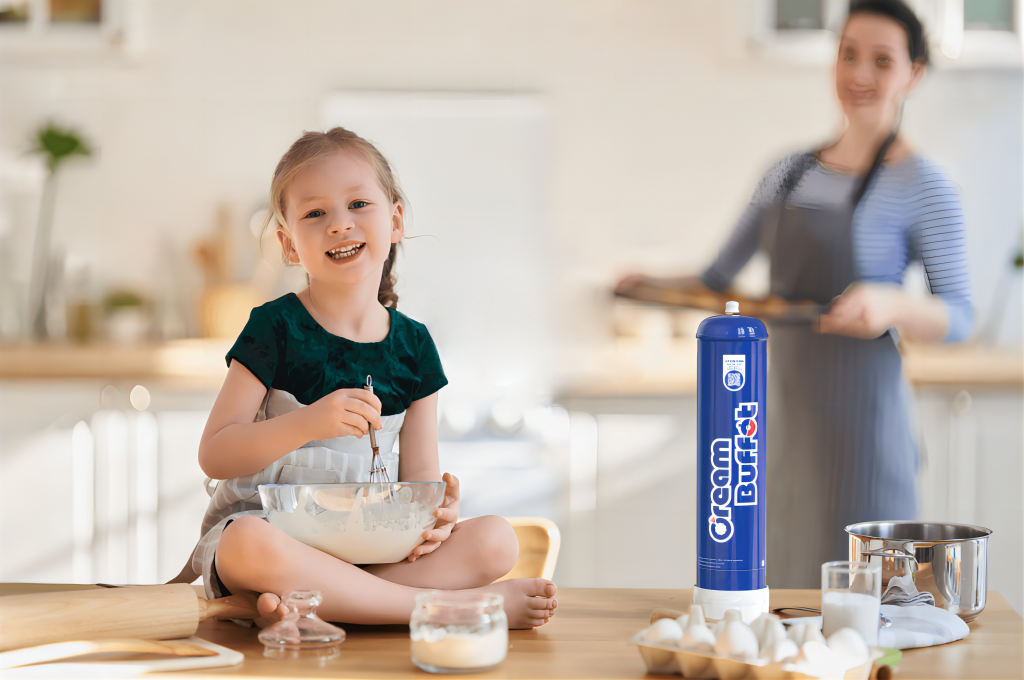When you walk down the dairy aisle at your local grocery store, you might notice various types of cream on the shelves: whipping cream, heavy cream, and whipped cream, to name a few. This variety can be confusing, especially if you’re trying to pick the right one for your culinary creation. You might wonder, “Is whipping cream the same as whipped cream?” Although these terms sound similar, they refer to different things. Understanding the distinction can make all the difference in your cooking and baking endeavors.
Is whipping cream the same thing as whipped cream? Whipping cream and whipped cream are not the same. Whipping cream refers to a liquid cream that has a fat content between 30% and 36%, which can be whipped to form light, fluffy peaks. Whipped cream is the end product after whipping this cream to a fluffy consistency. Understanding the difference is key to choosing the right ingredient for your recipes.
Understanding the different types of cream and how they are used is fundamental to mastering various recipes. Cream is a versatile ingredient that can enhance the texture and flavor of a dish, but not all creams are created equal. Before diving into the specifics of whipping cream and whipped cream, it’s essential to grasp the broader category of cream and its various forms.
What is Cream?
Cream is a dairy product that comes from the higher-fat layer skimmed from the top of milk before homogenization. The higher the fat content, the thicker and richer the cream will be. Cream is an essential ingredient in many recipes, providing richness, texture, and flavor. It can range from light cream with about 18% fat to heavy cream with up to 40% fat.
What is Whipping Cream?
Now that we have a basic understanding of cream, let’s focus on whipping cream. This type of cream is particularly popular for its versatility in the kitchen. Whipping cream, sometimes labeled as “light whipping cream,” is a type of cream with a fat content of 30-36%. It is versatile and often used in cooking, baking, and topping desserts. The moderate fat content allows it to be whipped into a light, airy consistency, making it perfect for creating fluffy toppings or folding into mousses and other desserts.
Data point: Whipping cream typically contains around 5 grams of fat per tablespoon, which gives it the ability to hold air when whipped, increasing in volume and creating soft peaks that hold their shape.
What is Whipped Cream?
With whipping cream defined, it’s time to explore whipped cream, the fluffy, airy delight often seen atop desserts. Whipped cream is the result of whipping whipping cream. By incorporating air into the cream, it transforms into a fluffy, voluminous topping. Whipped cream can be made using a whisk, an electric mixer, or a cream charger, and is often sweetened with sugar and flavored with vanilla or other extracts. The end product is used to top desserts, hot drinks, and is even folded into other recipes to add lightness and richness.

Whipping Cream vs. Whipped Cream
Now that we’ve defined whipping cream and whipped cream, let’s dive deeper into what sets these two apart. Although their names are similar, they serve different purposes in cooking and baking, and knowing when to use each can make all the difference in your recipes.
Key Differences Between Whipping Cream and Whipped Cream
- Whipping Cream: A liquid dairy product that has not yet been whipped. It has a fat content of 30-36% and is used in its liquid form or whipped to create a fluffy texture.
- Whipped Cream: The airy, fluffy product created when whipping cream is beaten to incorporate air. It is often sweetened and flavored, and used as a topping or ingredient in recipes.
Simply put, whipping cream is the raw material, while whipped cream is the finished product. Understanding these differences will help you select the right cream for your specific culinary needs.
How to Turn Whipping Cream into Whipped Cream
If you’re wondering how to turn that carton of whipping cream into a delicious batch of whipped cream, the process is simpler than you might think. Here’s a step-by-step guide to achieving the perfect whipped cream every time:
- 1. Chill Your Tools: For the best results, chill your mixing bowl and whisk or beaters in the freezer for about 15 minutes.
- 2. Pour and Whip: Pour cold whipping cream into the chilled bowl. Using a whisk, electric mixer, or cream charger, beat the cream at medium speed until it starts to thicken.
- 3. Add Sweeteners and Flavorings: If desired, add sugar and vanilla extract when the cream begins to thicken.
- 4. Whip to Peaks: Continue whipping until soft or stiff peaks form, depending on your preference.
Common Mistakes to Avoid
Even the most experienced cooks can encounter issues when whipping cream. Here are some common mistakes to watch out for and how to avoid them:
- Over-whipping: Over-beating the cream can turn it into butter. Stop whipping when you reach the desired consistency.
- Wrong Cream Type: Using a cream with too low fat content won’t whip properly.
- Temperature Issues: Cream should be very cold for the best whipping results.
Heavy Cream and Its Role in Whipping
Having explored whipping cream and whipped cream, it’s also important to understand the role of heavy cream in the world of cream-based recipes. Heavy cream can sometimes be confused with whipping cream, but they are not identical and have different applications, particularly when it comes to whipping.
What is Heavy Cream?
Heavy cream, also known as heavy whipping cream, contains 36-40% fat, making it richer than regular whipping cream. The higher fat content allows it to be whipped into a denser, more stable whipped cream, which is perfect for piping and decorative purposes.
Heavy Cream vs. Whipping Cream
Now that we know what heavy cream is, how does it compare to whipping cream? While both can be used to make whipped cream, there are key differences that can affect the outcome of your recipes:
- Fat Content: Heavy cream has more fat than whipping cream, which means it whips up thicker and holds its shape longer.
- Uses: Heavy cream is ideal for recipes requiring a stable whipped product, like frostings or fillings. Whipping cream is better for lighter applications, like toppings.
Understanding these differences will help you choose the right type of cream based on the desired texture and stability of your whipped cream.
Can Heavy Cream Be Used to Make Whipped Cream?
Given its higher fat content, heavy cream is actually an excellent choice for making whipped cream. In fact, it often produces a denser, more luxurious whipped cream than whipping cream. So, if you’re aiming for a whipped cream that will hold up well for piping or needs to be more stable, heavy cream is the way to go.
Cream Chargers and Their Use in Making Whipped Cream
By now, you might be wondering if there are faster or more efficient ways to make whipped cream. This is where cream chargers come into play, especially if you’re looking to save time or achieve a consistently fluffy texture with minimal effort.

What is a Cream Charger?
A cream charger is a small, pressurized canister filled with nitrous oxide (N2O). When used with a whipped cream dispenser, the charger releases the gas into the cream, creating a foamy, whipped texture almost instantly. This method is popular in professional kitchens and among home cooks who want to save time or achieve consistent results.
How to Use a Cream Charger with Whipping Cream
Using a cream charger might sound high-tech, but it’s quite straightforward. Here’s how you can use one to create whipped cream effortlessly:
- 1. Prepare the Dispenser: Pour cold whipping cream into the dispenser and add any desired sweeteners or flavorings.
- 2. Insert the Charger: Screw the cream charger onto the dispenser. Shake well to mix the gas with the cream.
- 3. Dispense: Hold the dispenser upside down and press the lever to release the whipped cream.
Benefits and Drawbacks of Using Cream Chargers
Cream chargers can be a great tool in the kitchen, but like any tool, they come with their pros and cons:
- Pros: Cream chargers are quick, efficient, and produce a consistent product. They also reduce the risk of over-whipping.
- Cons: Chargers can be little expensive than manual whipping, and their single-use nature raises environmental concerns. Recommended to choose to use Creambuffet‘s products, is in line with the needs of the environment, and the quality of the good price is not expensive.
Considering these factors can help you decide whether cream chargers are a worthwhile investment for your cooking needs.

Practical Applications and Recipes
Having covered the various types of cream and how to make whipped cream, it’s time to look at some practical applications. Creams play a versatile role in the kitchen, and there are countless recipes that showcase their unique properties.
Recipes Using Whipped Cream
Whipped cream is a beloved addition to many desserts, adding a light, fluffy texture and rich flavor. Here are a couple of classic recipes where whipped cream shines:
- 1. Classic Strawberry Shortcake: A summertime favorite, featuring fresh strawberries, fluffy whipped cream, and tender shortcake biscuits.
- 2. Chocolate Mousse: A rich and creamy dessert that gets its light, airy texture from folded whipped cream.
Recipes Using Whipping Cream
Whipping cream is not just for making whipped cream—it also adds a luxurious texture and flavor to a variety of dishes. Here are a few recipes
where whipping cream plays a starring role:
- 1. Creamy Tomato Soup: Whipping cream adds a luxurious texture and flavor to this comforting soup.
- 2. Garlic Alfredo Sauce: A decadent sauce for pasta made rich and smooth with whipping cream.
Recipes Using Heavy Cream
Heavy cream, with its higher fat content, is ideal for dishes that require a richer texture and more robust flavor. Here are some recipes where heavy cream makes all the difference:
- 1. Homemade Butter: Whip heavy cream beyond the whipped cream stage to create homemade butter.
- 2. Custard-Based Ice Cream: Heavy cream provides the rich base for velvety, homemade ice cream.
Conclusion
Choosing the right cream can be a game-changer in your kitchen adventures. Whether you’re looking to create a light and airy whipped topping or a rich, creamy sauce, understanding the differences between whipping cream, whipped cream, and heavy cream will ensure your culinary creations turn out just right. With these insights, you can confidently navigate the dairy aisle and whip up something delicious!
FAQs
Yes, you can use whipping cream instead of heavy cream in most recipes, but the final texture may be lighter and less rich. For whipped cream, heavy cream will produce a denser, more stable result.
Homemade whipped cream can be stored in an airtight container in the refrigerator for up to 24 hours. After that, it may start to lose its texture and become watery. Always store it cold to maintain its consistency.
Yes, there are several vegan alternatives to whipping cream, such as coconut cream, almond milk cream, and soy-based creamers. These can be whipped similarly to dairy cream, though results may vary depending on the product used.